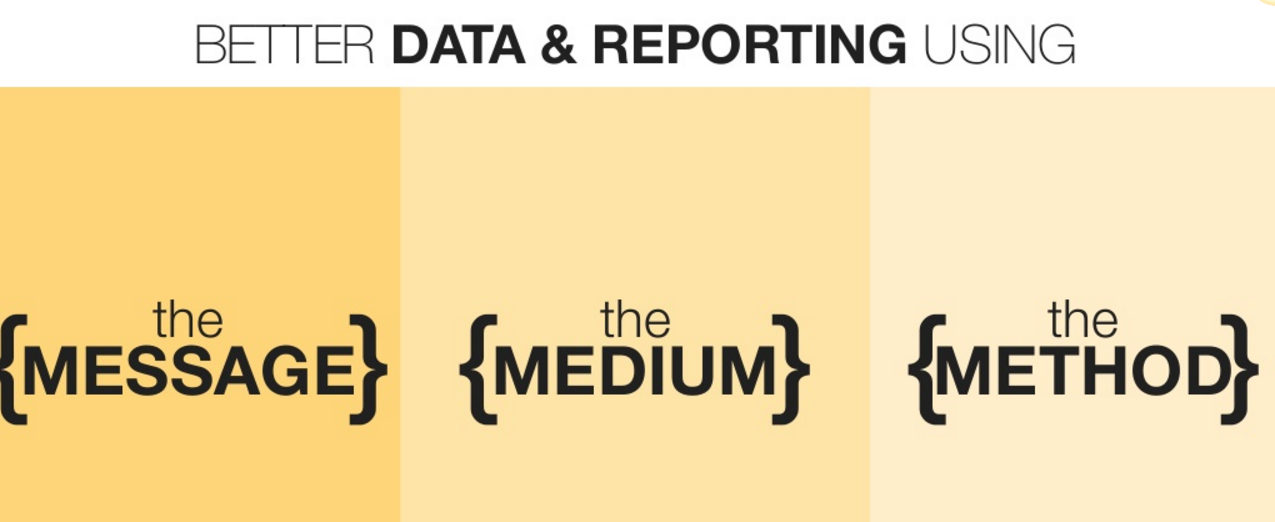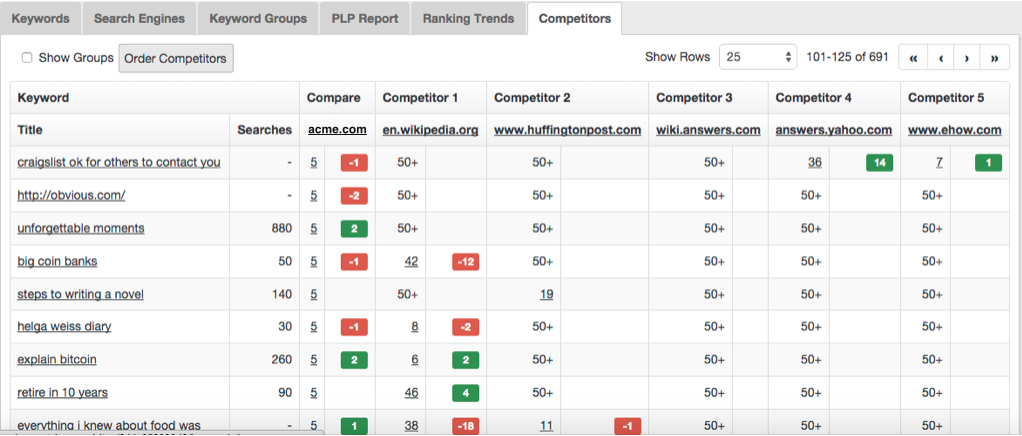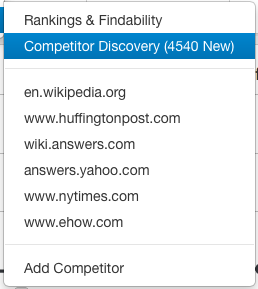Have you faced content burnout? If you find yourself staring at a blank screen with a blinking cursor and wondering what you’re doing there, you’re not alone. Although a majority of brands are now implementing a content marketing strategy, 70% of marketers feel their efforts are not effective, according the Content Marketing Institute. Difficulty measuring results and finding messages that are relevant and unique are among the challenges faced by content marketers and creators. Even the best storytellers among us struggle with finding new content ideas that are relevant enough to convert audiences and enthuse customers.
Using search data, competitor’s data, and a tool for keyword discovery, you can tap a well of trending topics and subjects that will result in a steady stream of fresh content ideas to get even the most burned out among us enthused again.
The Trouble with Content
It all begins with knowing what’s working and what’s not. And while that sounds easy enough, it’s one of the greatest challenges content marketers face. Defining content success means understanding which messages are working, which types of content your audiences prefer, and what marketing channels or social channels your audience is using when they’re looking for or discussing your product or service. Each of these elements contributes to the overall success of any piece of content and understanding and measuring each one separately is a challenge. See the medium, method, and message process for content measurement in more detail in the eBook: Bridge the gap between content creation & marketing strategy with usable, shareable data.

Content fatigue is a symptom of having only a limited number of messages or topics and saying the same thing over and over or creating content that’s ineffective because the messages are too widespread and aren’t cohesive enough to tell a single story.
Remember when you first started creating content? Content marketing was all shiny and new and the things you created were getting some success? At some point, things start to bog down a bit because you’ve either run out of ideas, or you’re not delivering the content your audiences want to engage with.
The solution? Find the topics that are relevant to your audiences now and continue to discover new, relevant topics to answer the questions your audiences are already asking.
The Fresh Content Solution
The three components of the fresh content solution include:
- Using current search data to monitor keyword performance and change over time.
- Using competitor keyword data and performance for search data.
- Using keyword and competitor discovery tools to find new topics.
Using search data to monitor keyword performance and change over time
There are three types of keyword activity that give you immediate insight into possible content topics and industry changes.
- Top keyword activity for improved keywords
- Top keyword activity for declining keywords
- Top keyword activity for competitors
Using these three insights in tandem will give you an overview of the topics and keywords you’re already using that are either improving in rank or declining in rank, as well as an overview of the topics where your competitors are gaining interest. Let’s dive a little deeper into each of these to see where content ideas come from.

Improved keywords are those keywords and topics you’re already tracking that are improving in rank. Knowing which pieces of content are associated with each of these keywords will give you insight into where you’re doing a good job of matching a piece of content to a specific topic. Use this information to inform additional content creation around the same topic. Consider generating additional content for your highest-ranking keywords where you’re already hitting the mark.
“Let’s say the piece of content that’s improving in rank is a blog post. Since you know you’ve hit the mark with that piece of content, consider using the same topic in a different medium, such as video, podcast, eBook, landing page, or whatever,” suggests Erin O’Brien, President and COO GinzaMetrics.
Declining keywords are those keywords and topics that are not matching up with audience expectations and possibly not passing the search engine relevancy test resulting in the content being downgraded in rankings. Use this data to determine if it’s the content itself, or the keywords you’re targeting with the content that’s contributing to a decline in rank. It could be that the keyword itself is losing interest among your target audience or that other, similar, content is ranking higher for the same topic. Declining keyword data is the first part of determining what kind of content is making headway and what is not.
When you look at the improving keywords for competitors, you’ll be able to see what content they’re creating that’s resonating with your audience. You’ll know what types of content they’re creating, what keywords they’re using, and how it differs from what you’re doing. If a piece of content is significantly rising in rank, then you know the competition is doing something right. At this point, you’ll want to look at the specific content that’s beating you and respond with content of your own.

“This is not an invitation to copy your competitor’s content. It’s an opportunity to understand how they’re framing the conversation and what type of content is gaining traction,” notes Erin.
You’ll want to discover not only the keywords that content is ranking for, but also the type of content that’s ranking and the context that they’re using. For instance is it:
- Product overview
- Feature details
- How to…
- User testimonial
Create keyword and content groups to narrow your view and focus your attention on your current objectives or campaigns. Grouping your content will help you segment out your data, save you from data deluge, and allow you to focus on competitor data associated with one topical area at a time. Learn how to create keyword and content groups in this episode of Found Friday and the accompanying blog post.
Using keyword discovery for new content ideas
Keywords discovery is not the practice of just adding in new keywords. It’s actually a way to discover topics related to your industry and finding the words and phrases people are using when they search for those topics.
“In the GinzaMetrics platform, our keyword discovery tool begins at a very broad level and leads the user through to the most granular industry attributions. We’ll find the keywords that are currently being used when people are searching in industry niches,” according to Erin.

For instance, if you’re in the business of producing and selling athletic wear; you’ll want to get more granular that “fitness apparel”. You’ll want as close a match to your actual product as possible, for example women’s running shoes. Once you’re at that specific product level, discover a full list of terms and keywords that people search for when they’re talking about running.
When you’ve completed keyword discovery, you can then compare the keywords people are using to the keywords you’re producing content for and check for words that aren’t overlapping. The words that people are searching for, but that you aren’t currently tracking are your potential new content creation ideas. Now, you have an extensive list to choose from and you’ll have to decide which topics are most relevant to your brand.
Discover competing content and outrank it
Even if a brand isn’t competing with you for product, they may be competing with you for search rank position. A good example of this is another blog, or industry publication. If their audience is a lot larger than yours, they may, by default, get the search rankings over your content.

While you may not be able to outrank a publication or blog with a large following, you’ll want to be aware of their presence in your market, especially if they publish round up articles and are recommending products and brands. At the very least, you’ll want to reach out to those publications and make sure they’re aware of your products or services and provide them with the information they need to include you in their recommendations or round up articles.
On the other hand, they may be writing an article that is so popular that you’ll want to consider building your own unique content around that topic. At this point, you’ll want to offer contributed articles or look for opportunities for advertorials and other ways to be included in influential publications. It’s helpful to use competitor discovery to confirm you’re targeting the right content and the exact outlets before you spend time and money in other types of marketing pursuits.
“Discovering the content that’s competing with you in the market helps you to see all the ways that someone who doesn’t have anything to sell is really competing with you and what kinds of content they’re creating. Often, the competing content is articles and things you want to get more involved in,” suggests Erin.
Used in the right way, search data can transform ineffective content marketing programs into strategic marketing practices that produce relevant content, convert audiences, and get content creators enthused again.

